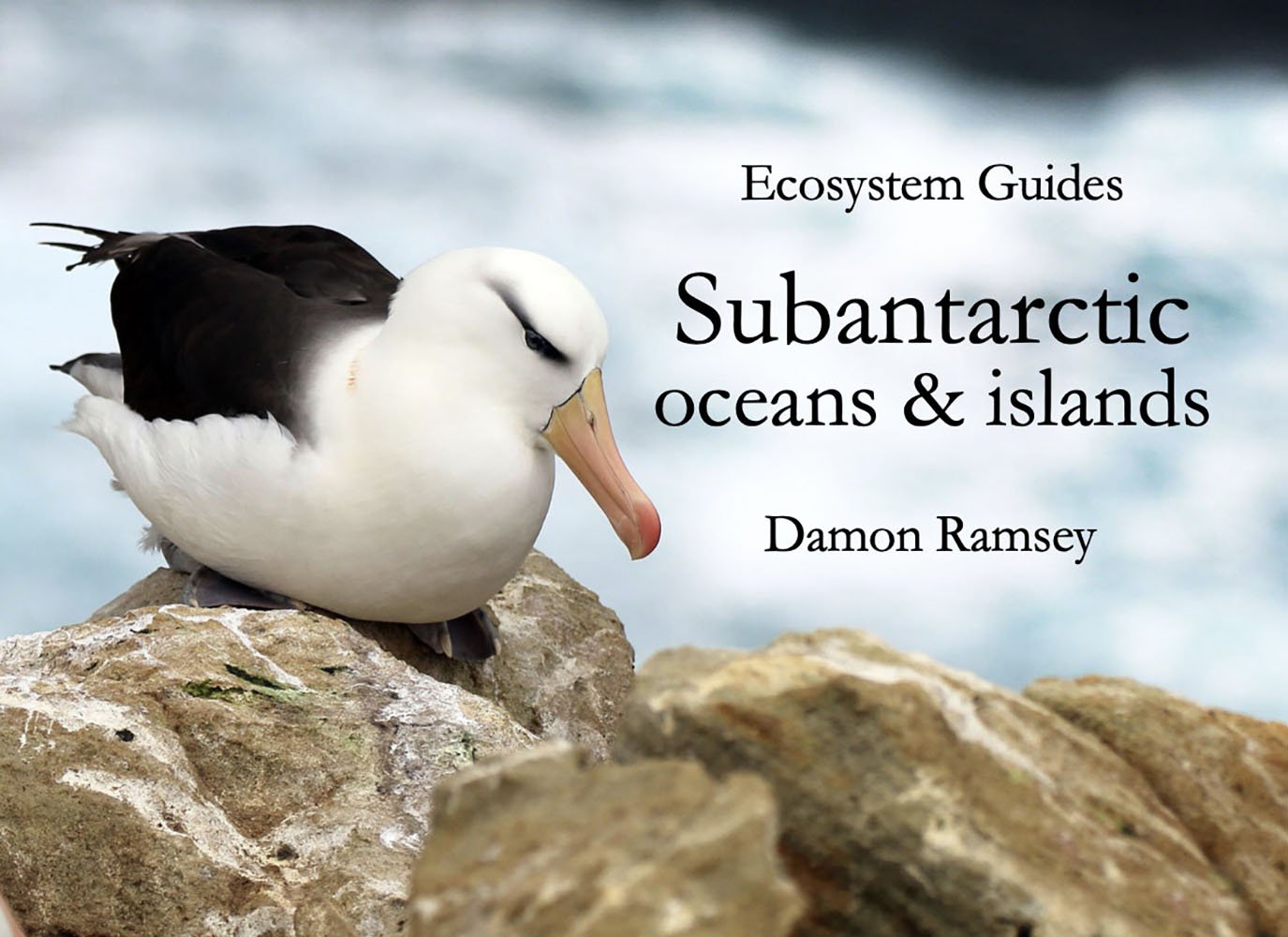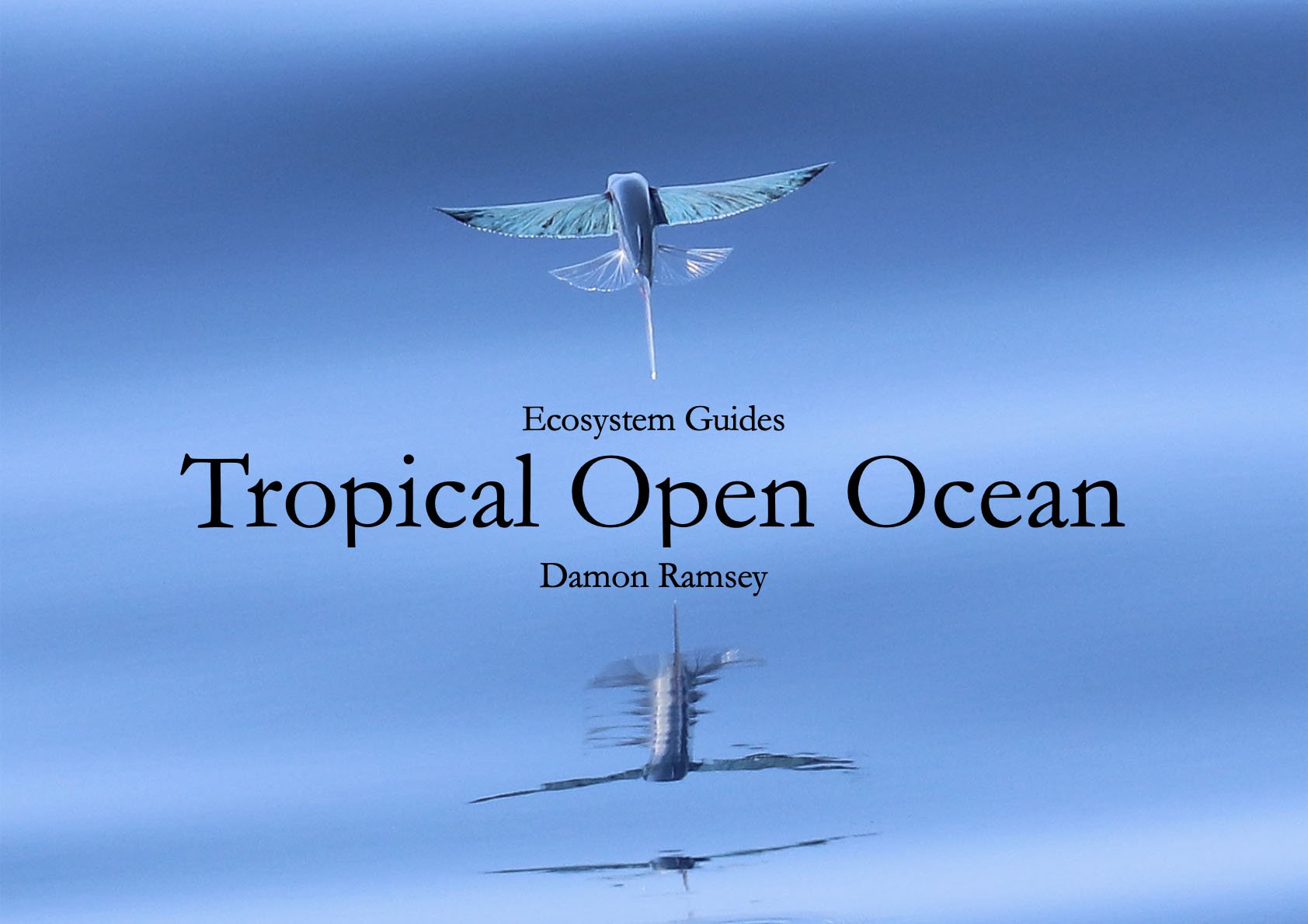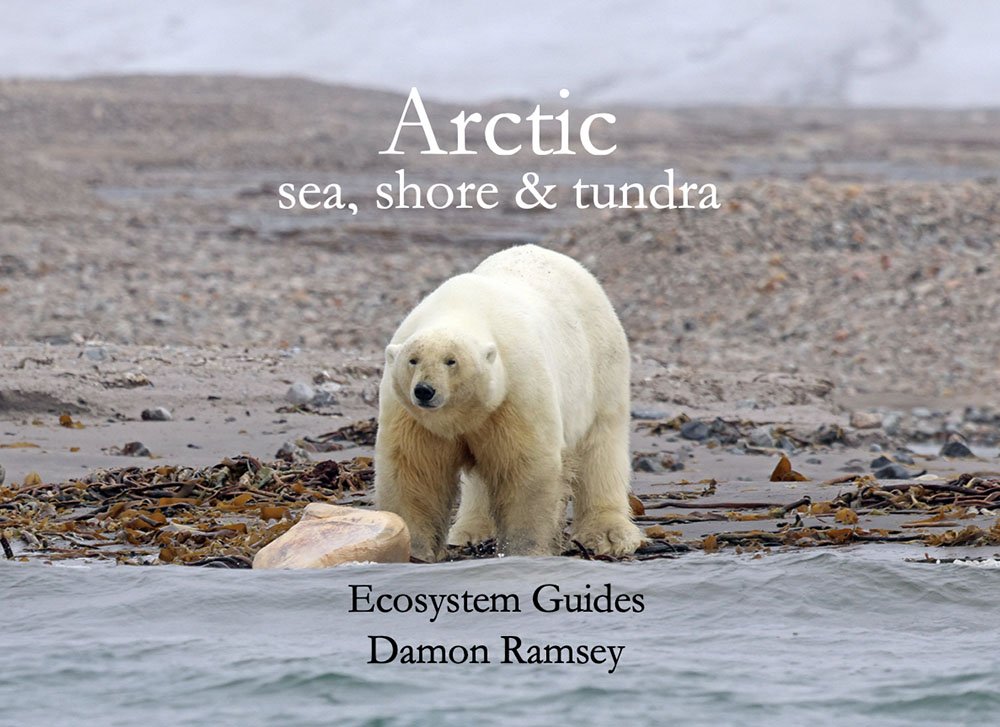ecosystem-guides.com
....exploring the planet's ecosystems
AUSTRALASIAN
Temperate Ocean
The temperate oceans of New Zealand and southern Australia...
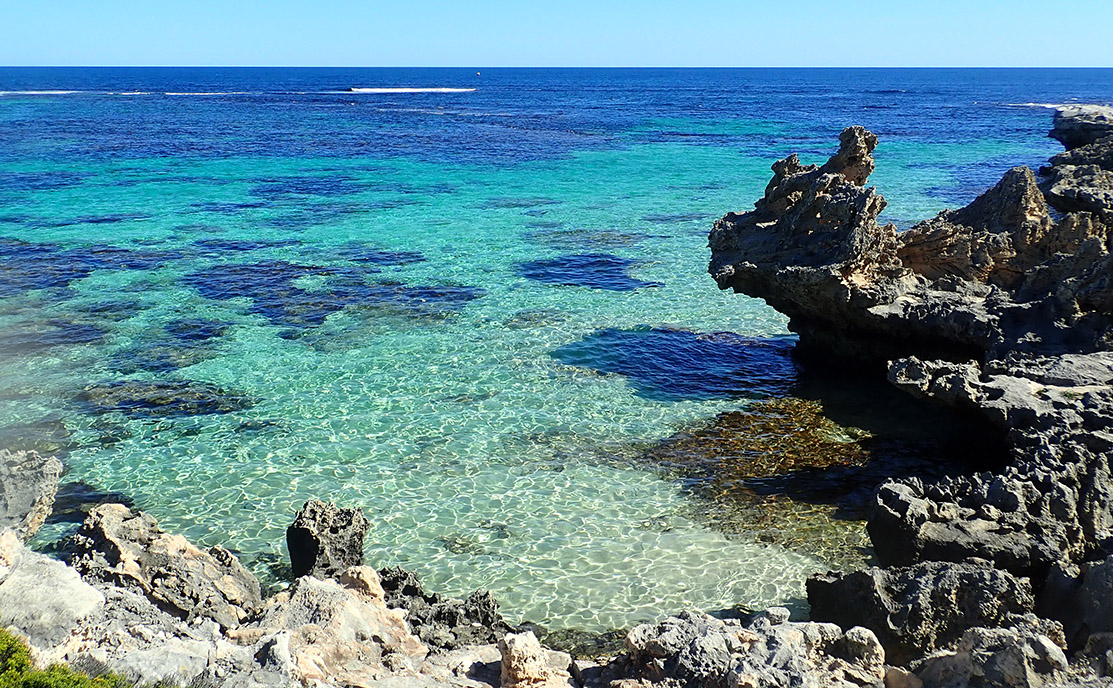 the clear waters of Rottnest Island, Western Australia
the clear waters of Rottnest Island, Western AustraliaWhile the cooler temperate waters of southern Australia and New Zealand don't have as many colourful corals as further north in Australia, there is a nice variety of seaweeds, sponges and other sessile organsisms. One of the prettiest is Dictyota dichotoma, 'Forked Ribbon'. Despite being a 'brown' algae, it often has a iridescent blue-greenish tinge.
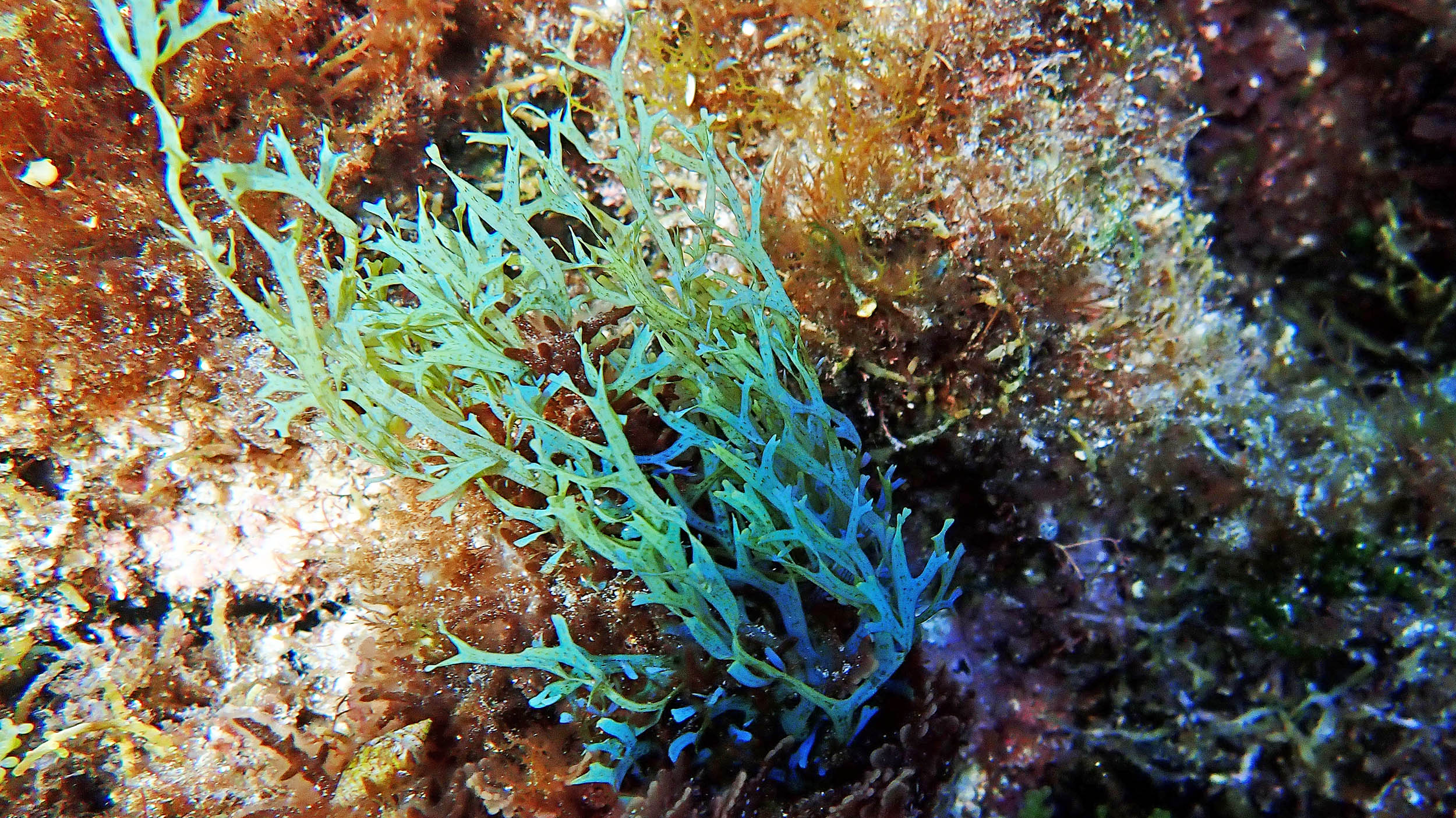 (Rottnest Island, W.A.)
(Rottnest Island, W.A.)Of course, temperate waters are famous for often being dominated by various types of fast growing large seaweeds known as 'kelp'. In the family Lessoniaceae is Ecklonia radiata, the 'Common/Spiny Kelp', which can form dense underwater forests. It is found from shallow waters down to 25 metres and is widespread in temperate waters of southern hemisphere.
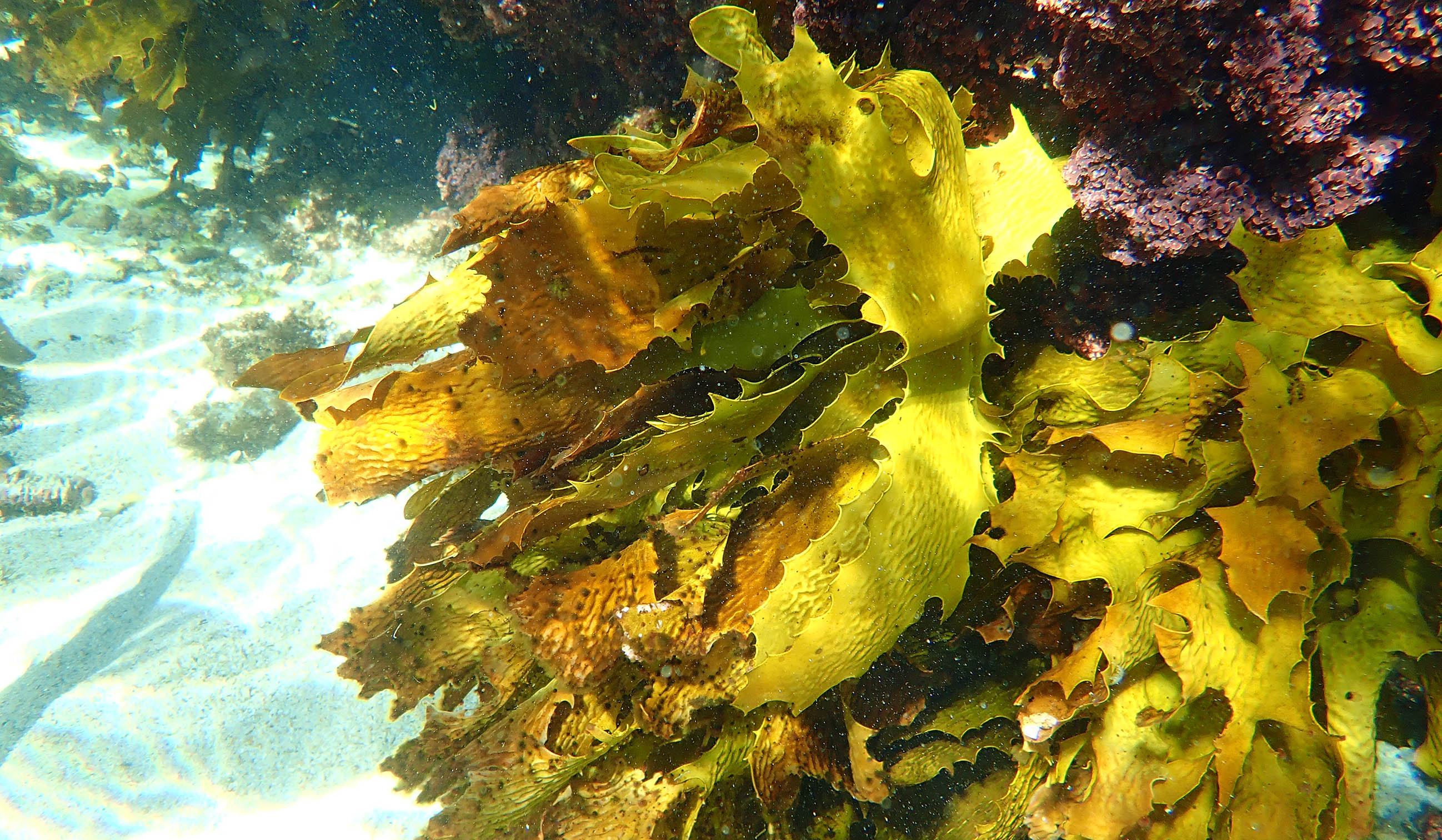 (Rottnest Island)
(Rottnest Island)There are also true flowering plants underwater, the sea grasses. Below is a Posidonia species of 'Strapweed' from the family Poisidoniaceae. They are a genus of seagrass with a disjunct distribution; they are found in the Mediterranean and in southern Australian waters.
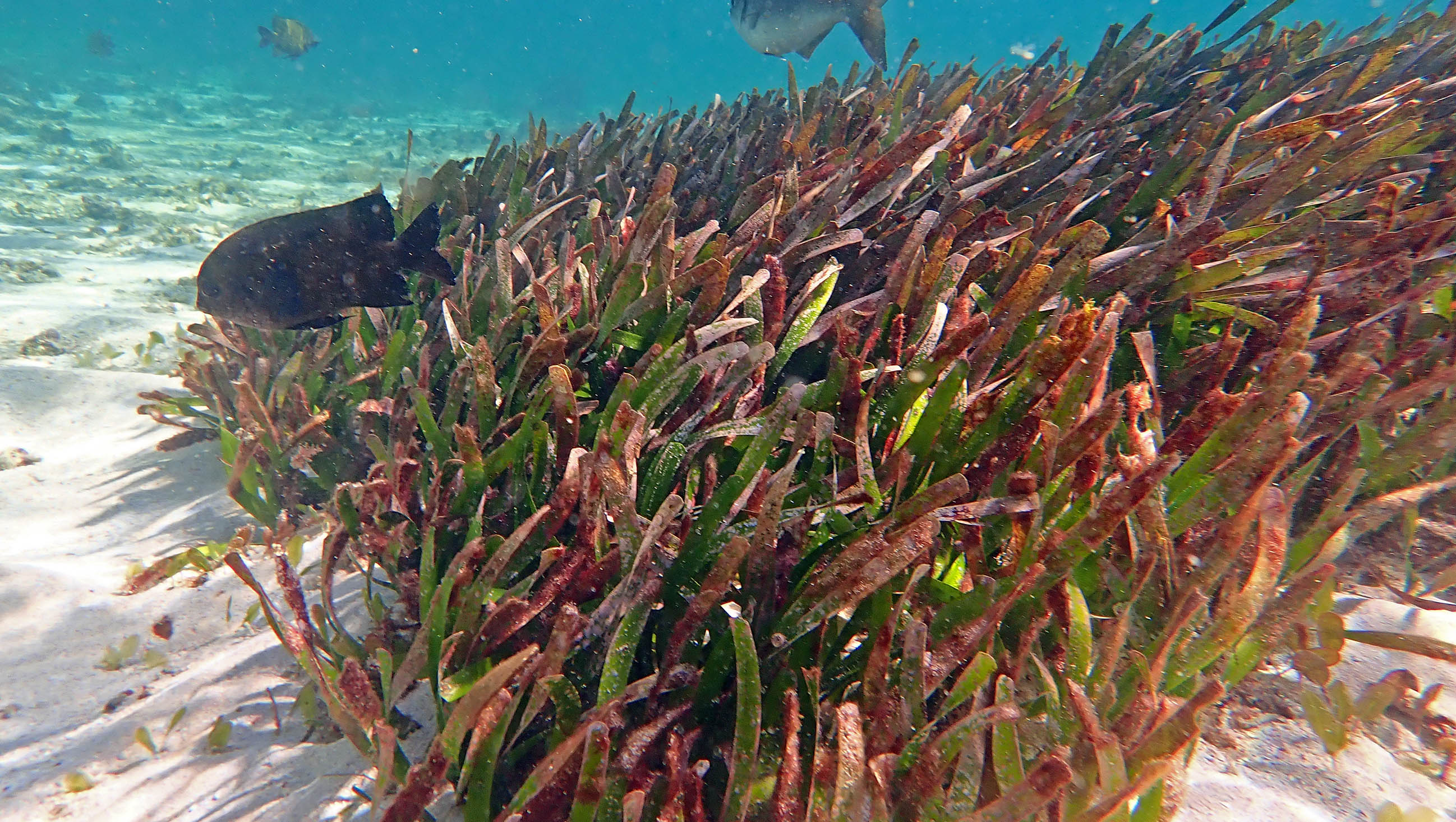 (Rottnest Island)
(Rottnest Island)The order Antipatharia contains the little see 'Black Corals. In Fiordland waters, the freshwater lens on top of the water encourages normally deeper water organisms to live closer to the surface. This is Antipathella (previously Antipathes) fiordensis.
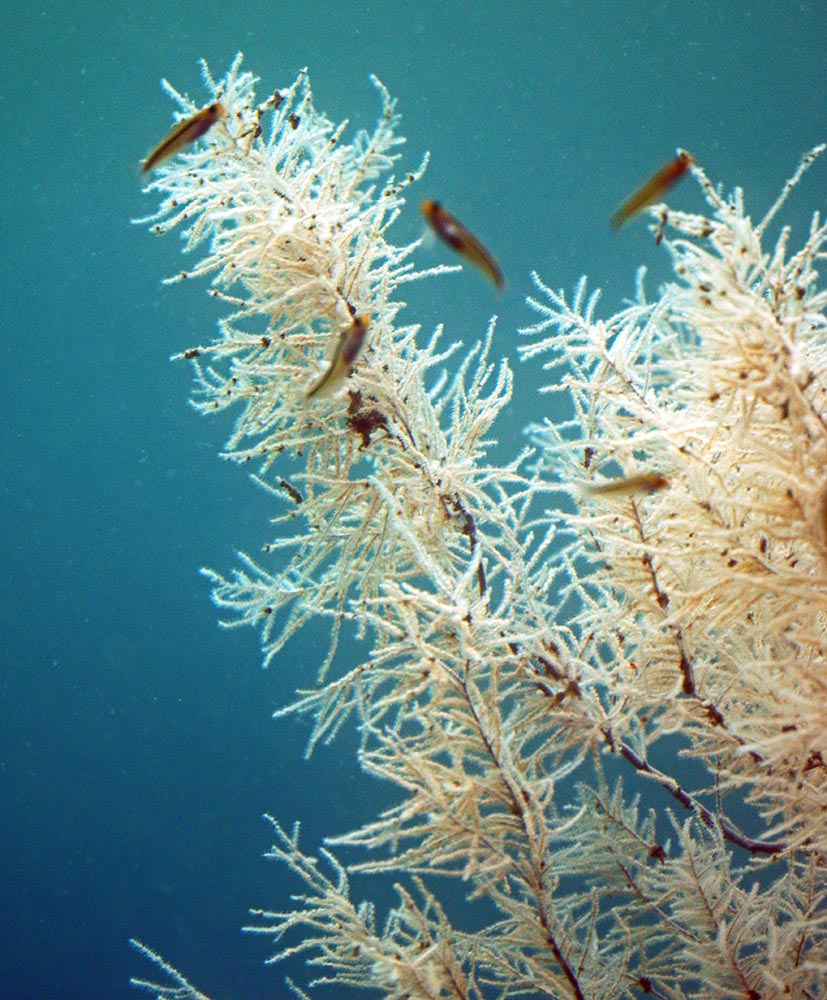
In one of the main sea-star families, the Asteriidae, is the distinctive Coscinasterias calamaria, 'Eleven-armed Sea-star', found only along the southern Australia and New Zealand coast.
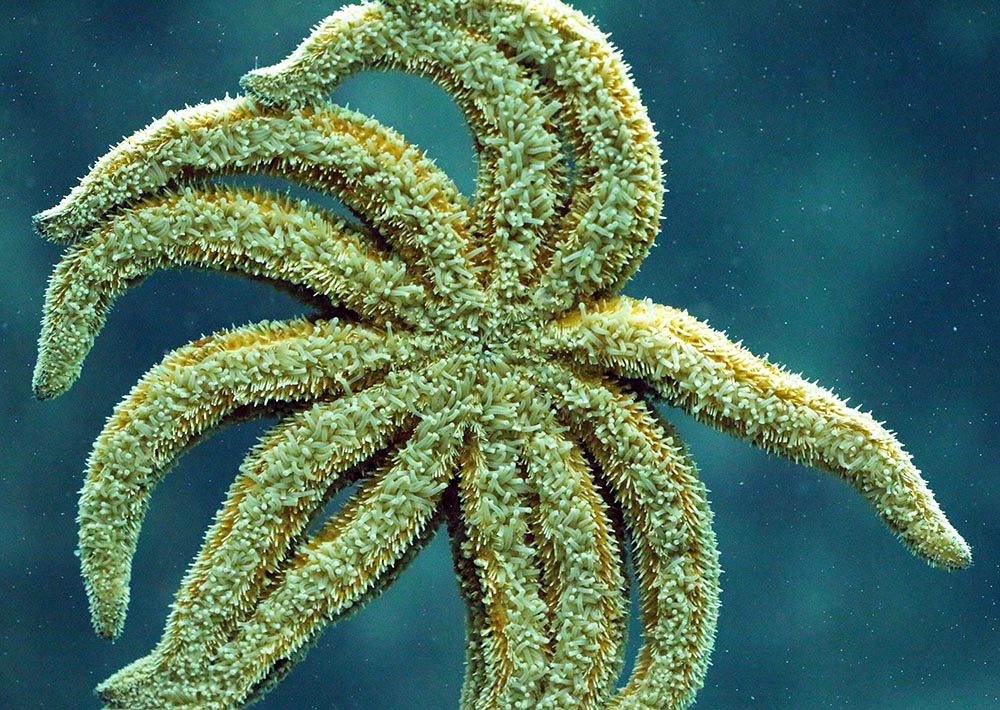
While the fish diversity is not as high and the species are not as colourful as the coral reefs further north in Australasia, there are lots of colourful fish to look for....if you can hanfle the cool water!
The family Serrandiae includes: Caesioperca lepidoptera, 'Butterfly/Red Perch' (below).
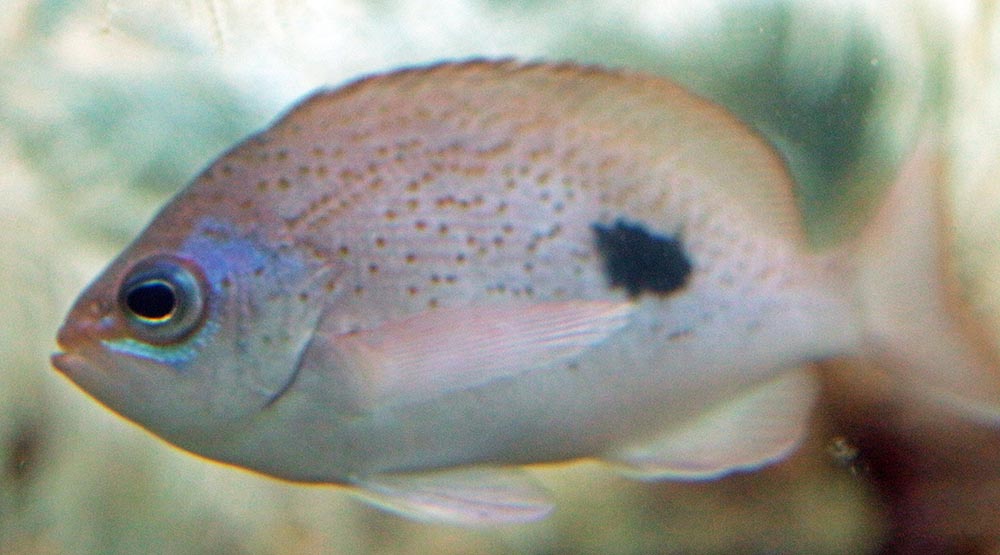 (Milford Sound Underwater Observatory, New Zealand)
(Milford Sound Underwater Observatory, New Zealand)The family Kyphosidae includes the 'Sea Chubs' and 'Drummers'. Below is Kyphosus cornelii, the 'Western Buffalo Bream'.
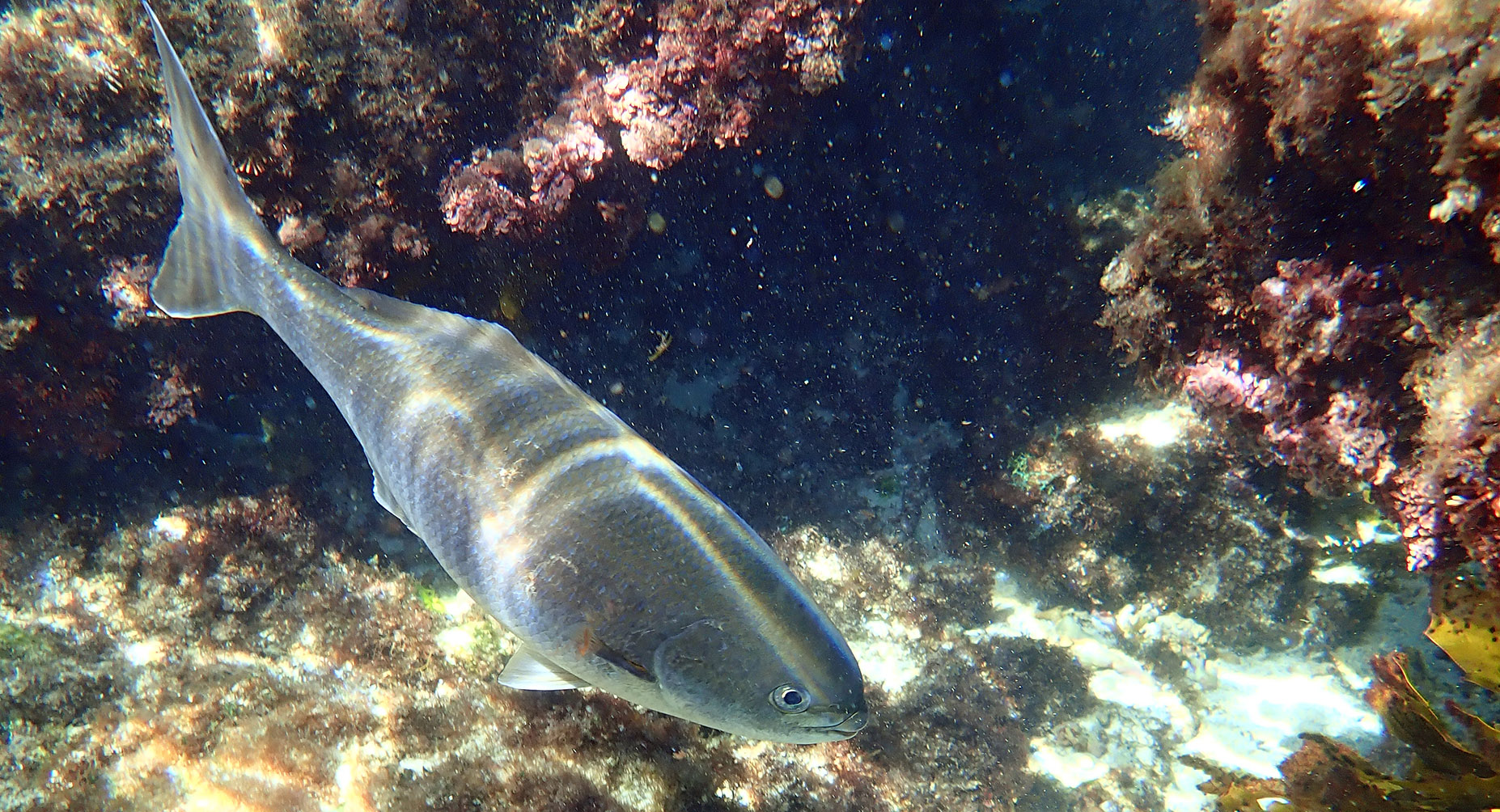 (Rottnest Island, Australia)
(Rottnest Island, Australia)The large family Pomacentridae include all the Damselfish. While most species are tropical, there are a number found in cooler waters, such as Pomacentrus milleri, 'Miller's Damselfish' (below). Adults are uniformly dark dull, with a blueish tinge, darker edged scales and lighter blue on edge of fins. They also extends into the tropical areas of eastern Indian Ocean, where it is often brighter in colour.
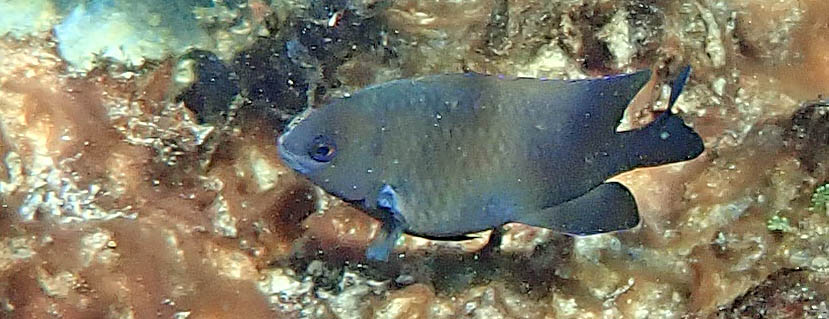 (Rottnest Island, Australia)
(Rottnest Island, Australia)The large and diverse family Labridae include all the Wrasses. Below is the temperate water Pseudolabrus miles, 'Scarlet Wrasse', an endemic to New Zealand.
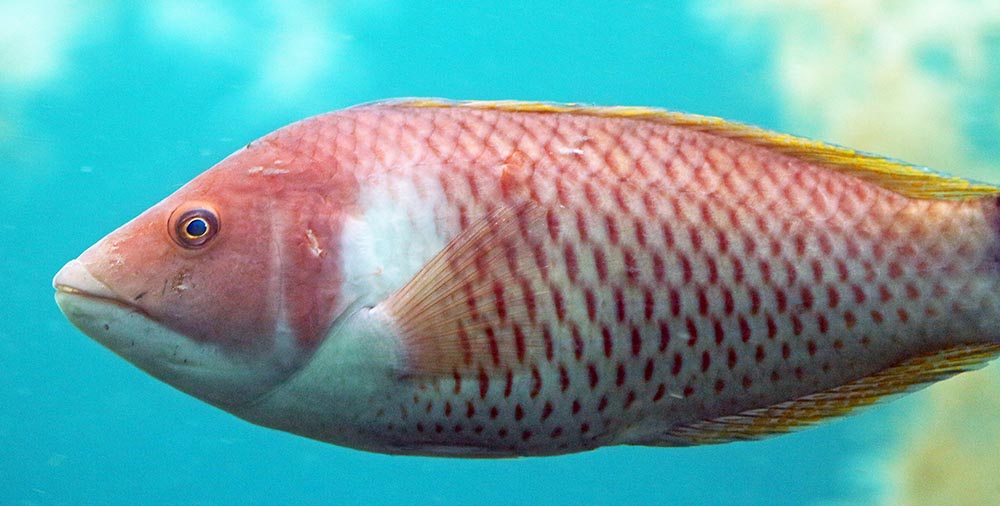 (Milford Sound Underwater Observatory, New Zealand)
(Milford Sound Underwater Observatory, New Zealand)Below is Notolabrus fucicola, the 'Blue Wrasse'. Found in temperate eastern Australian and New Zealand waters; in the latter region it is the largest wrasse.
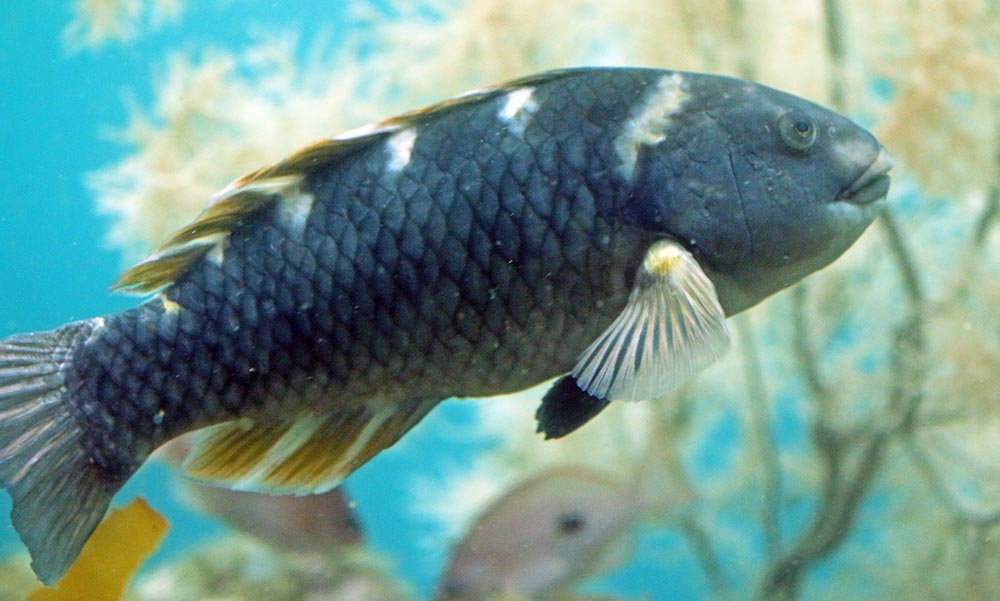 (Milford Sound Underwater Observatory, New Zealand)
(Milford Sound Underwater Observatory, New Zealand)Coris auricularis, the 'Western King Wrasse' is found along the west Australian coast. When it is at the juvenile stage, as pictured below, it often looks and gets work as a cleaner fish.
 (Rottnest Island, Australia)
(Rottnest Island, Australia)The family Monacanthidae includes Meuschenia scaber, 'Smooth/Velvet Leatherjacket'.
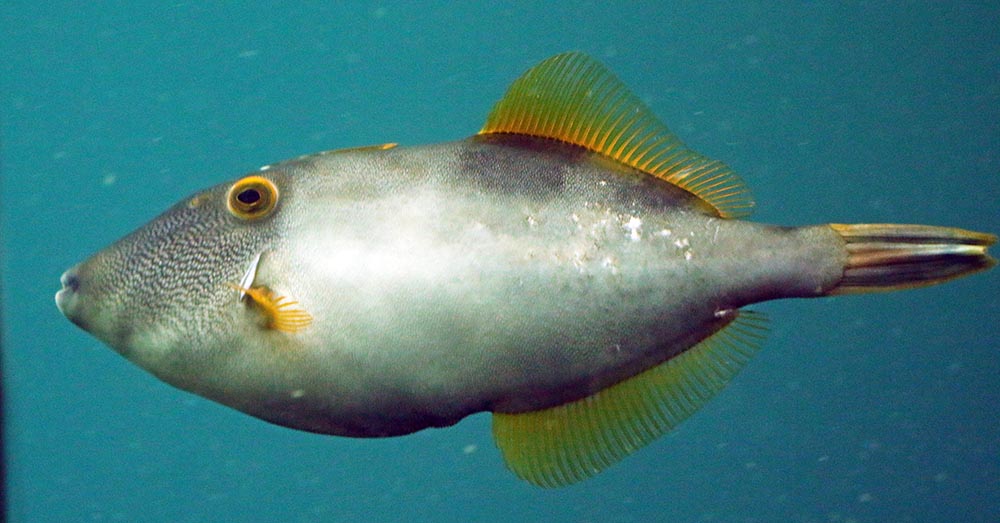
These waters are generally too cold for the sea reptiles one sees further north, such as sea snakes, crocodiles and marine turtles; however there is one species of the latter group that regularly reaches cooler waters; Chelonia mydas, the 'Green Turtle' (below). Even though they do not grow as large as Leatherback or Loggerhead turtles, the individuals in cooler waters can be large and heavy, much more so than their tropical equivalents.
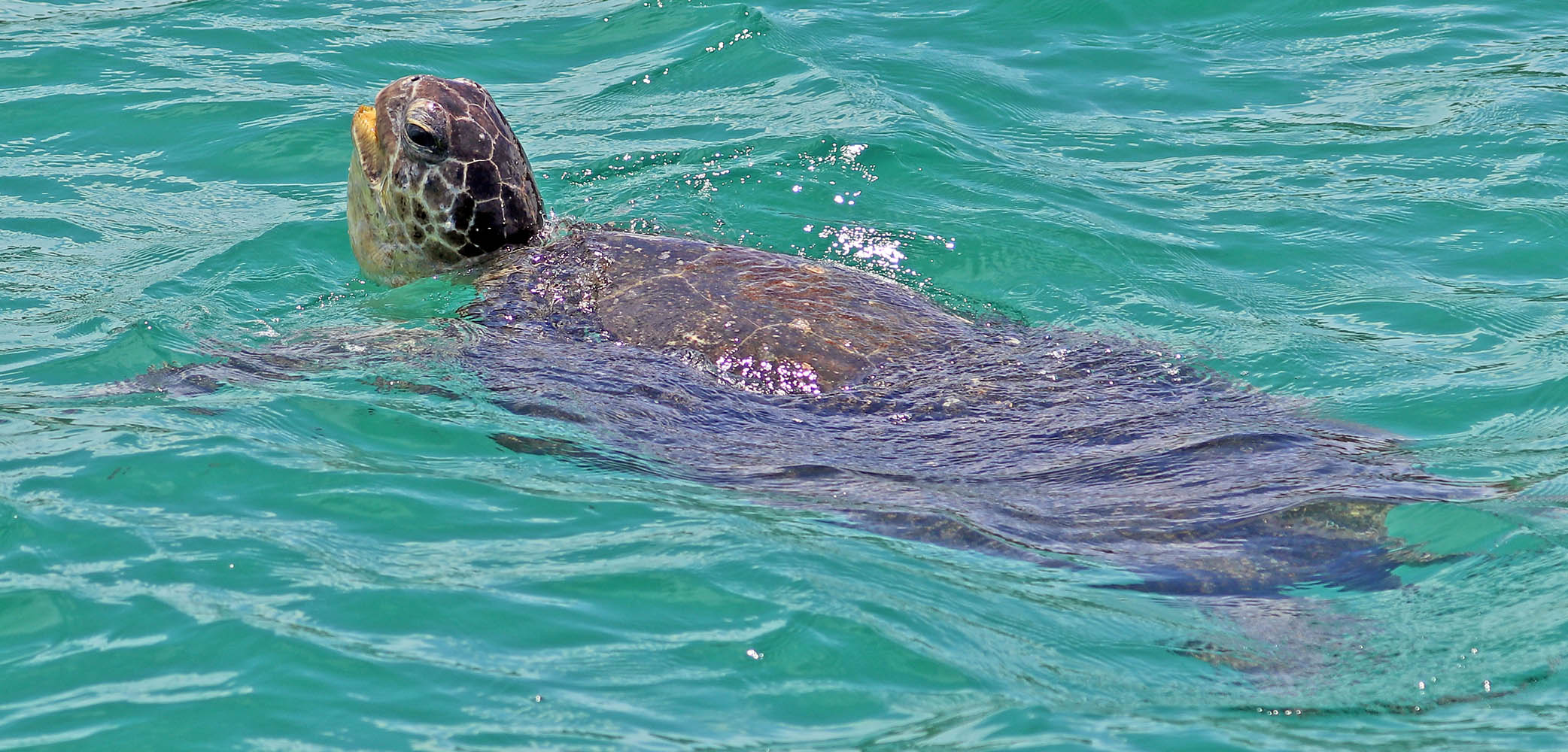 (off Moreton Island, Queensland)
(off Moreton Island, Queensland)The family Laridae includes all the terns and gulls. The gulls are normally only seen a few kilometres out to sea. While the equally large and widespread 'Kelp Gull' and the smaller 'Silver Gull' are more commonly seen, Larus pacificus, the “Pacific Gull’ is more or less endemic to southern Australian coast.
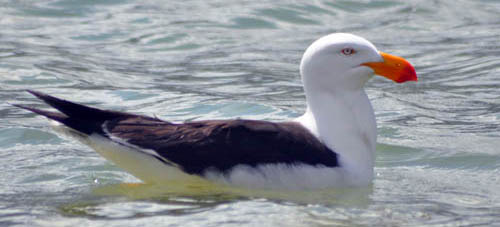
The family Spheniscidae contains only the penguins. Several species of 'Crested Penguins' can be seen off southern Australia and especially New Zealand, including Eudyptes pachyrhynchus, the range restricted 'Fiordland (Crested) Penguin'.
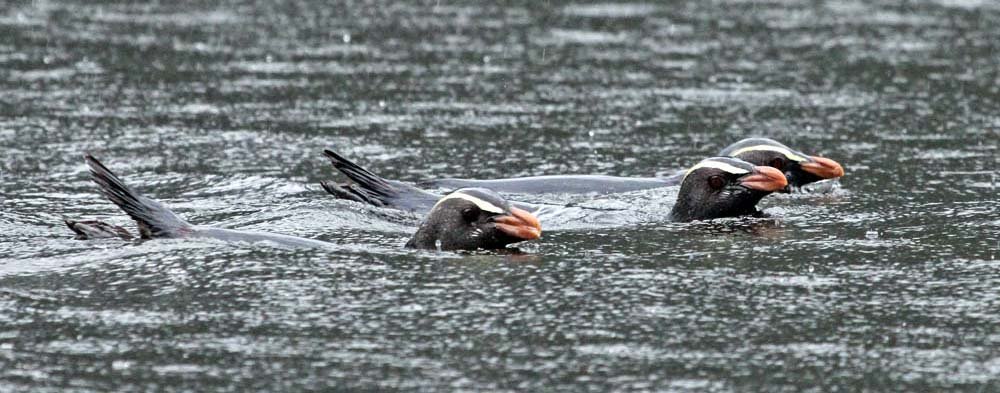 (Fiordland, New Zealand)
(Fiordland, New Zealand)This 'tubenose' order Procellariiformes; includes the Albatross & Mollymawks, Storm Petrels, Prions, and all the other petrels. They are distinguished by their nostrils being enclosed in a tube that runs along the bill.
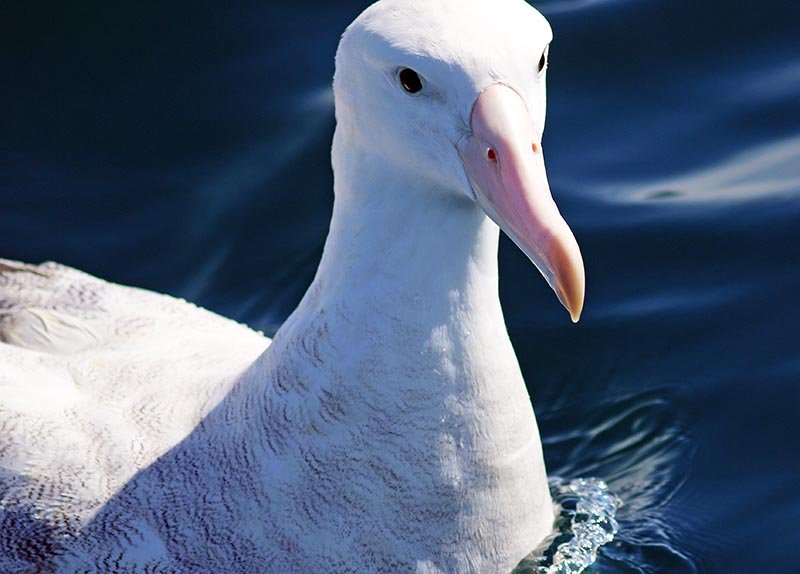
They include the largest of all flying birds; the Great Albatross reach wingspans of 3.6 metres.
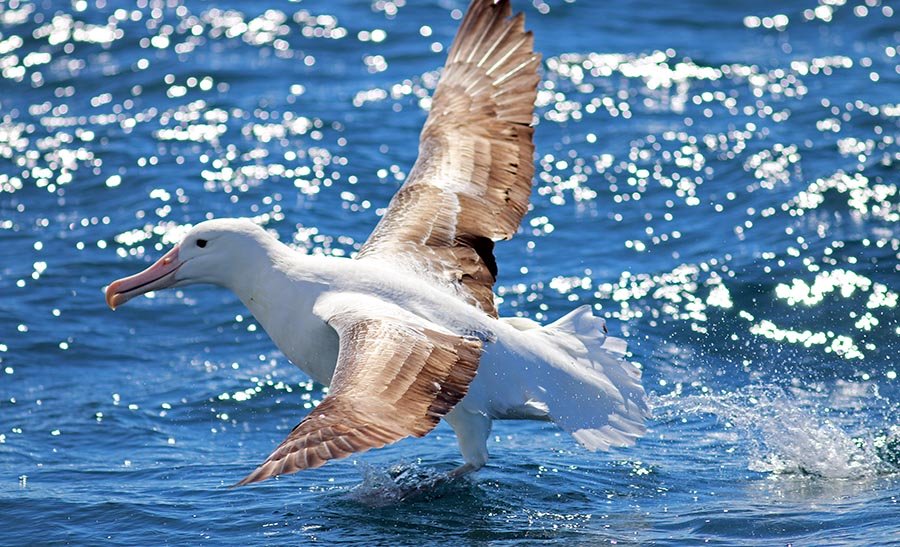 (Kaikoura, New Zealand)
(Kaikoura, New Zealand)There are is also a range of slightly smaller Albatross referred to as 'Mollymawks'.
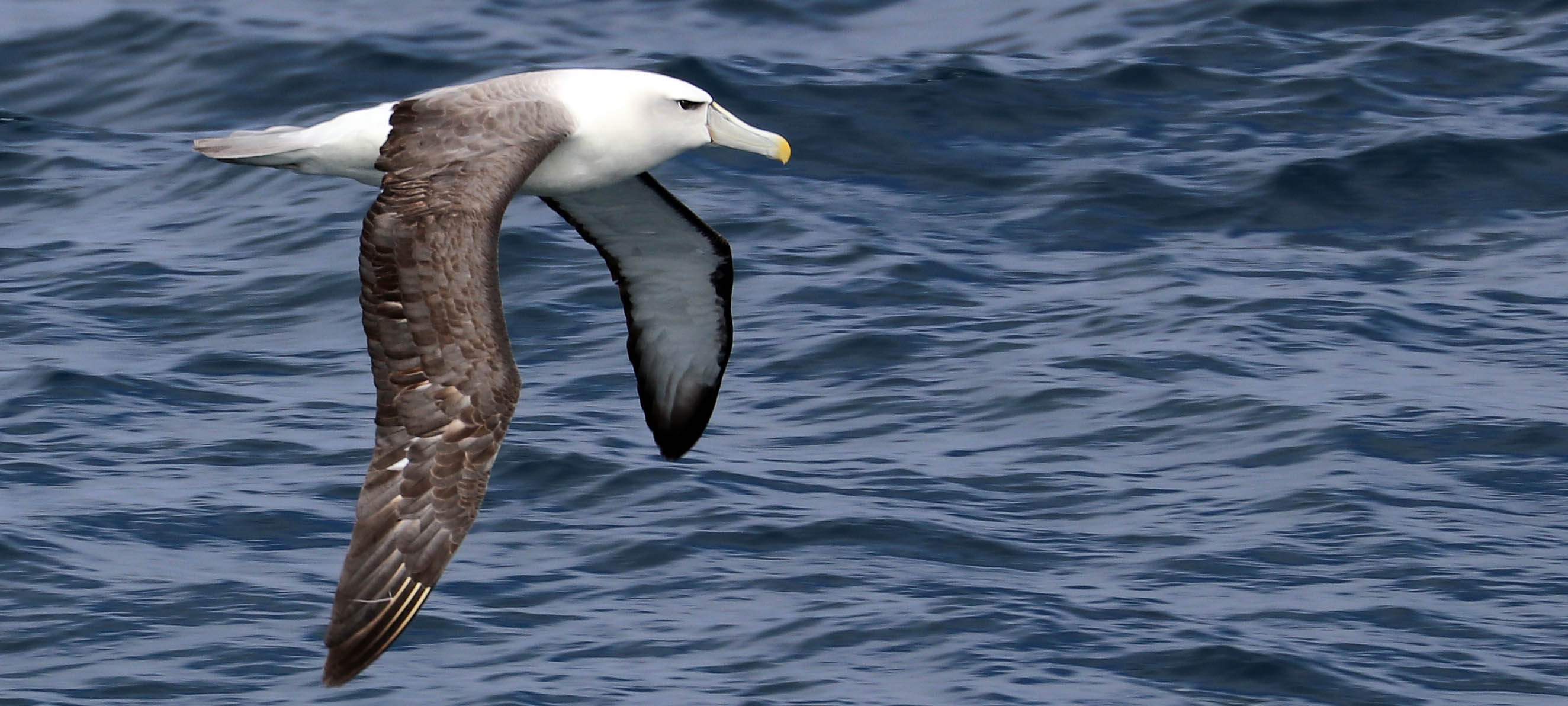 'Shy/White-capped Albatross'/Mollymawk', (off south-west coast of Tasmania).
'Shy/White-capped Albatross'/Mollymawk', (off south-west coast of Tasmania).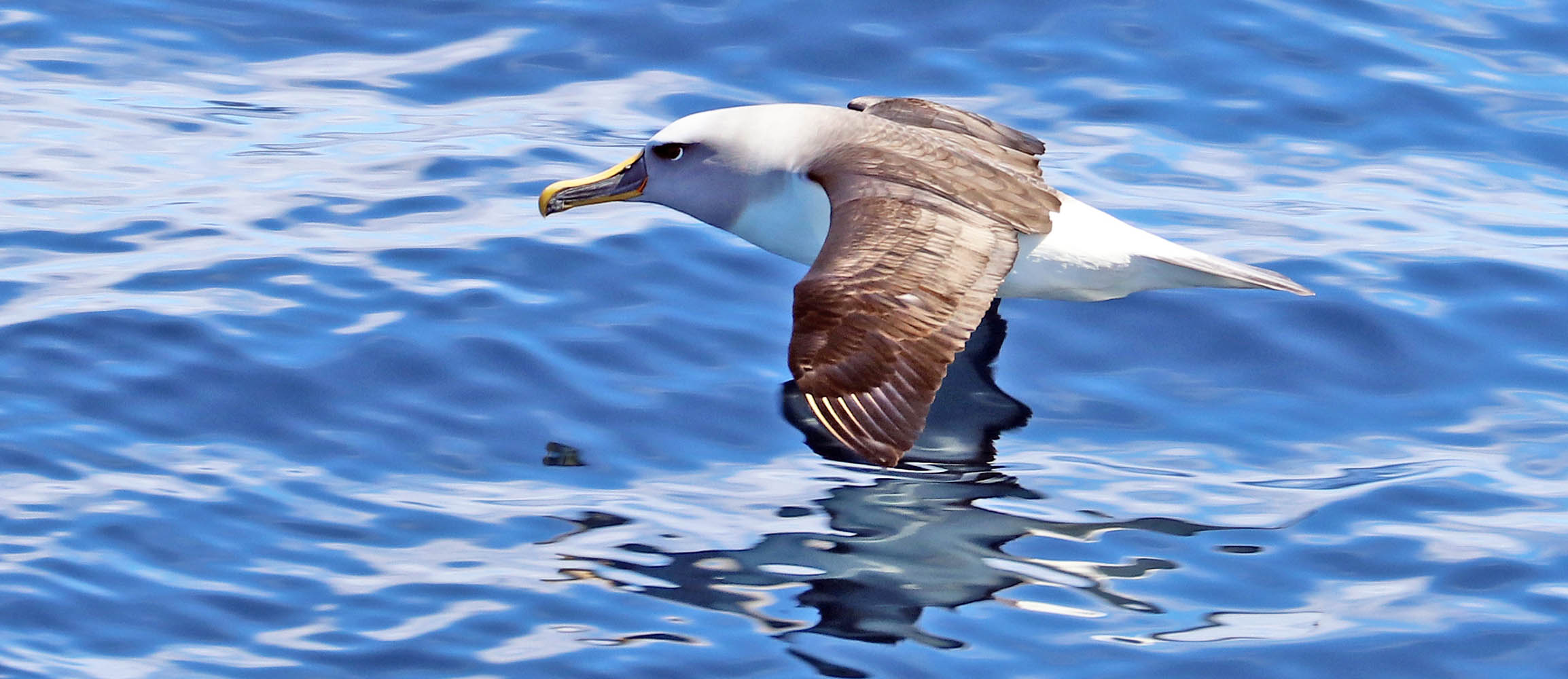 'Grey-headed Albatross' (Tasmania).
'Grey-headed Albatross' (Tasmania).The family Procellariidae includes the Prions, Shearwaters, Diving Petrels and various other 'typical' petrels. Below is Pterodroma gouldi, 'Grey-faced Petrel'. It is a breeding endemic to north island of New Zealand.
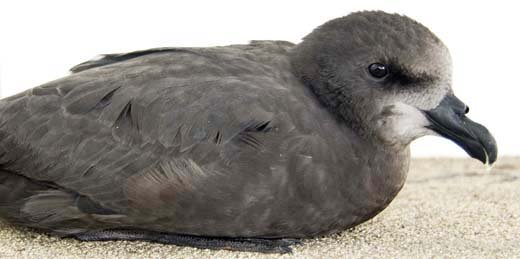 (on board cruise ship Mercury, New Zealand)
(on board cruise ship Mercury, New Zealand)Prions are small fast birds that skim above the cool temperate waters around Australasia and the southern oceans. Most of the species look very similar, but below is the most distinctive: Pachyptila vittata, 'Broad-billed Prion'. This is the largest of the prions, with the widest bill.
 (on board Oceanic Discoverer in New Zealand)
(on board Oceanic Discoverer in New Zealand)The 'Diving Petrels' (Pelecanoides spp.) are tiny seabirds that 'fly through waves'. I think Diving Petrels look like potatoes with hummingbird wings. Because they are so small and fast, they are not commonly seen or known by most people, and usually thought to be fish! Below is Pelecanoides urinatrix, 'Common Diving Petrel'.
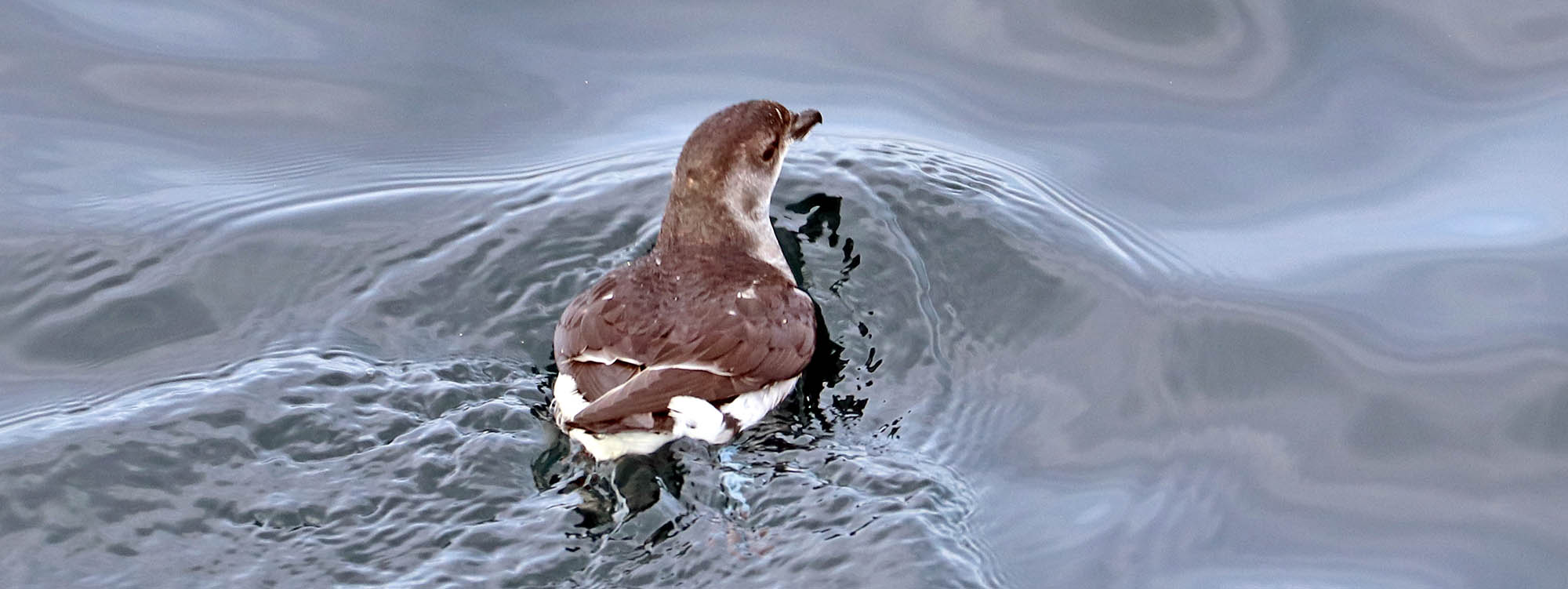 (off Tasmania)
(off Tasmania)The family Delphinidae contains over 40 species of what we think of as dolphins and smaller whales, from the small Hector's Dolphin to the huge Orca.
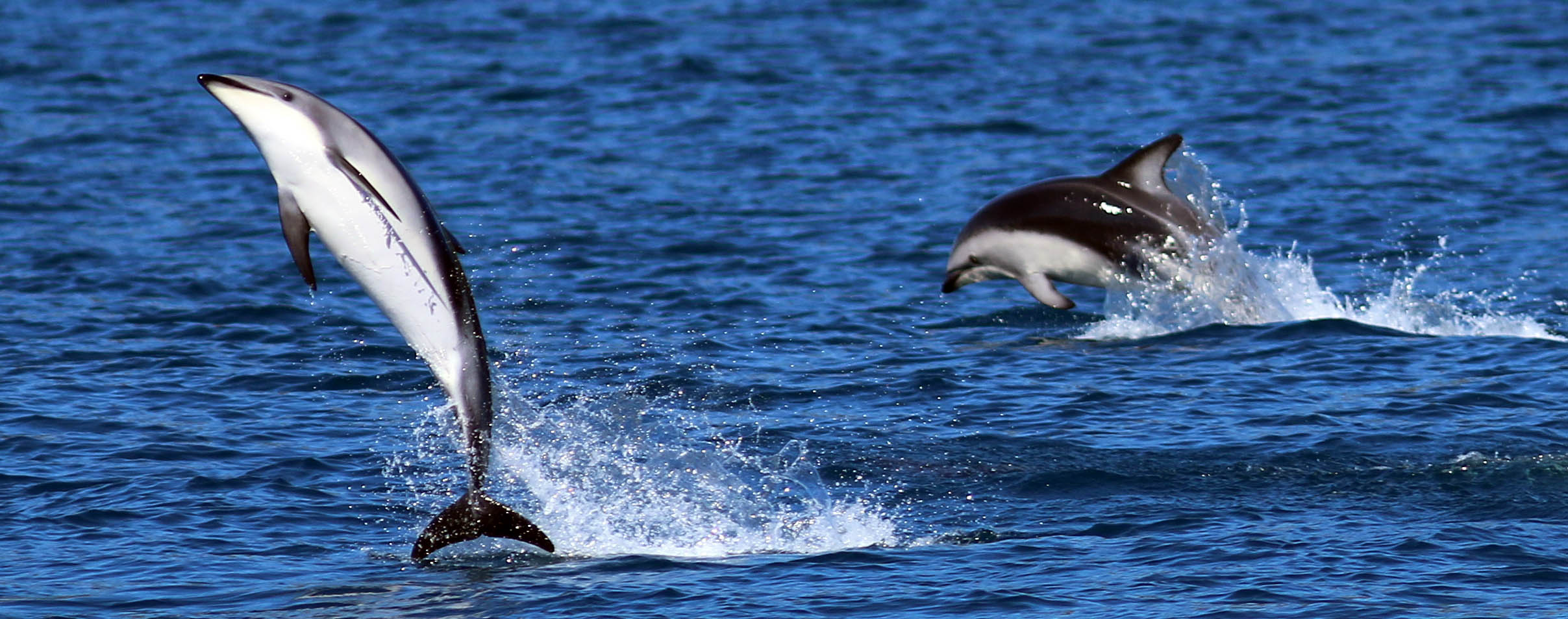 (Dusky Dolphins, Kaikoura, New Zealand)
(Dusky Dolphins, Kaikoura, New Zealand)The most familiar dolphin is the Tursiops aduncus, 'Inshore Bottlenose Dolphin', 'Indo-Pacific Bottlenose Dolphin'. This is the slimmer and more tropical of the two main Bottlenose Dolphin species. In Australia, it is more common in the tropics, but it does appear along the coast down to Shark Bay on the west coast, and extends to the south east along the east coast.
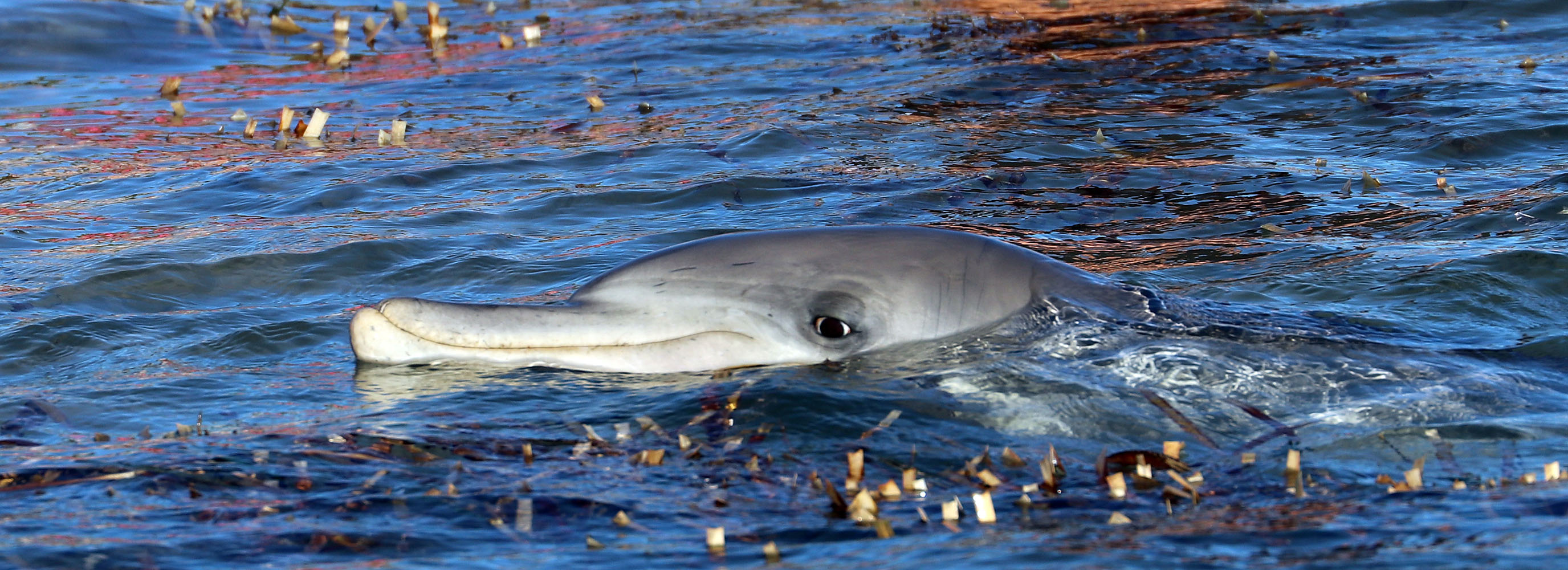 (Monkey Mia)
(Monkey Mia)The smallest dolphin is endemic to New Zealand: Cephalorhynchus hectori, 'Hector's Dolphin'. The smallest dolphin species in the world. Endemic to bays around the New Zealand coast.
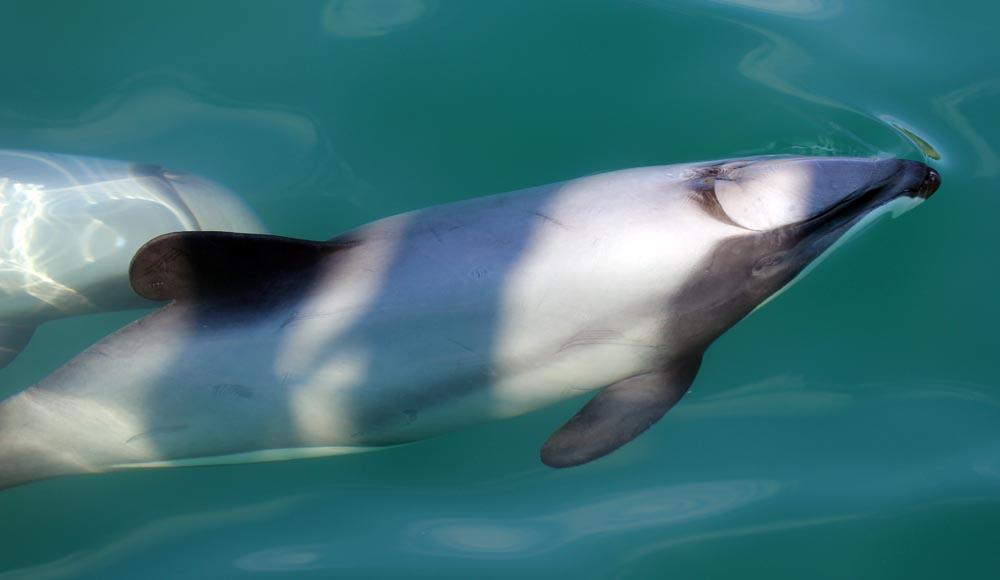 (Akaroa, New Zealand)
(Akaroa, New Zealand)Lagenorhynchus obscurus, the 'Dusky Dolphin' is one of the more commonly seen dolphins in New Zealand and, to a lesser extent, southern Australia while at sea. In my experience, this is the most energetic of the dolphins...
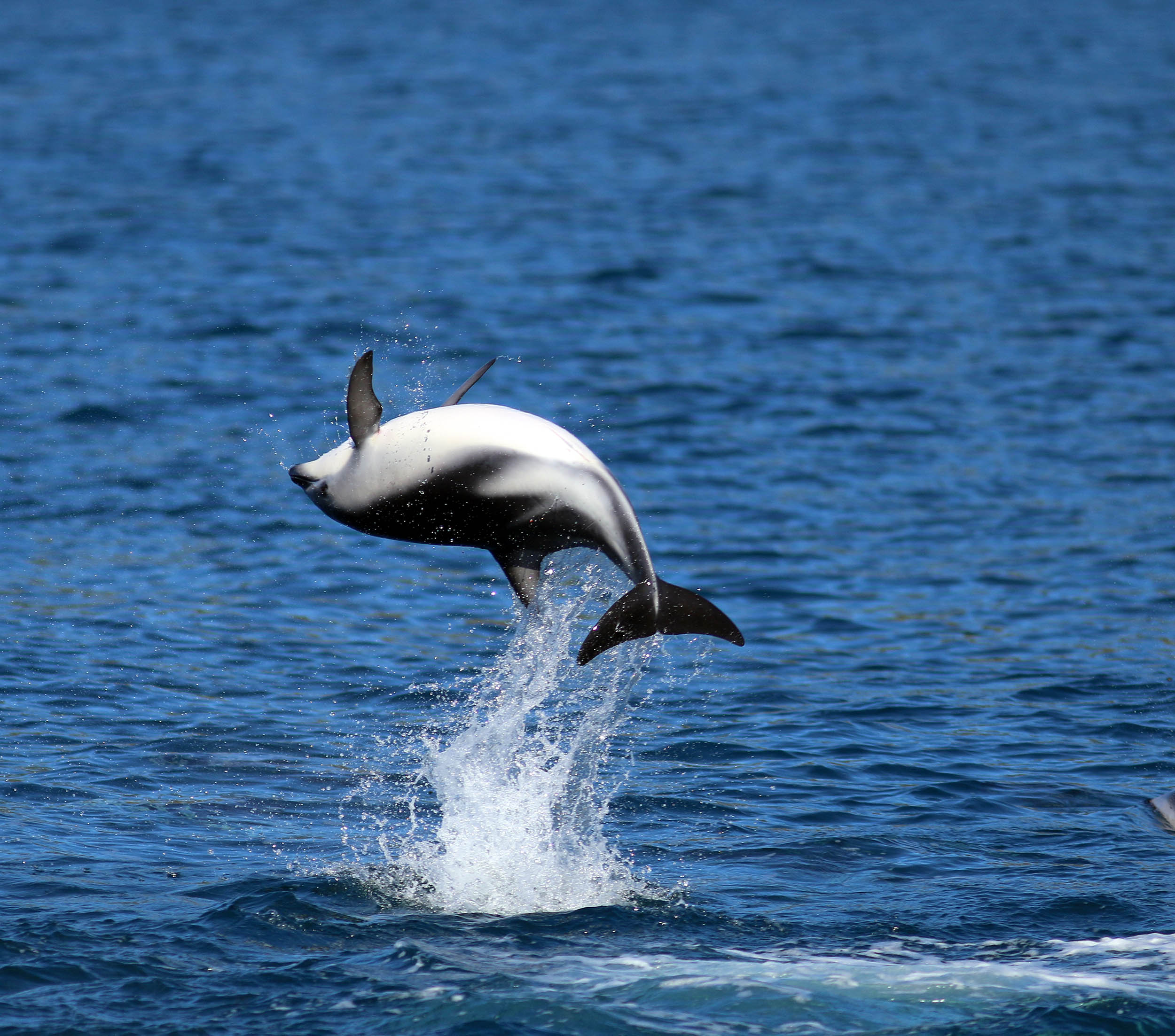
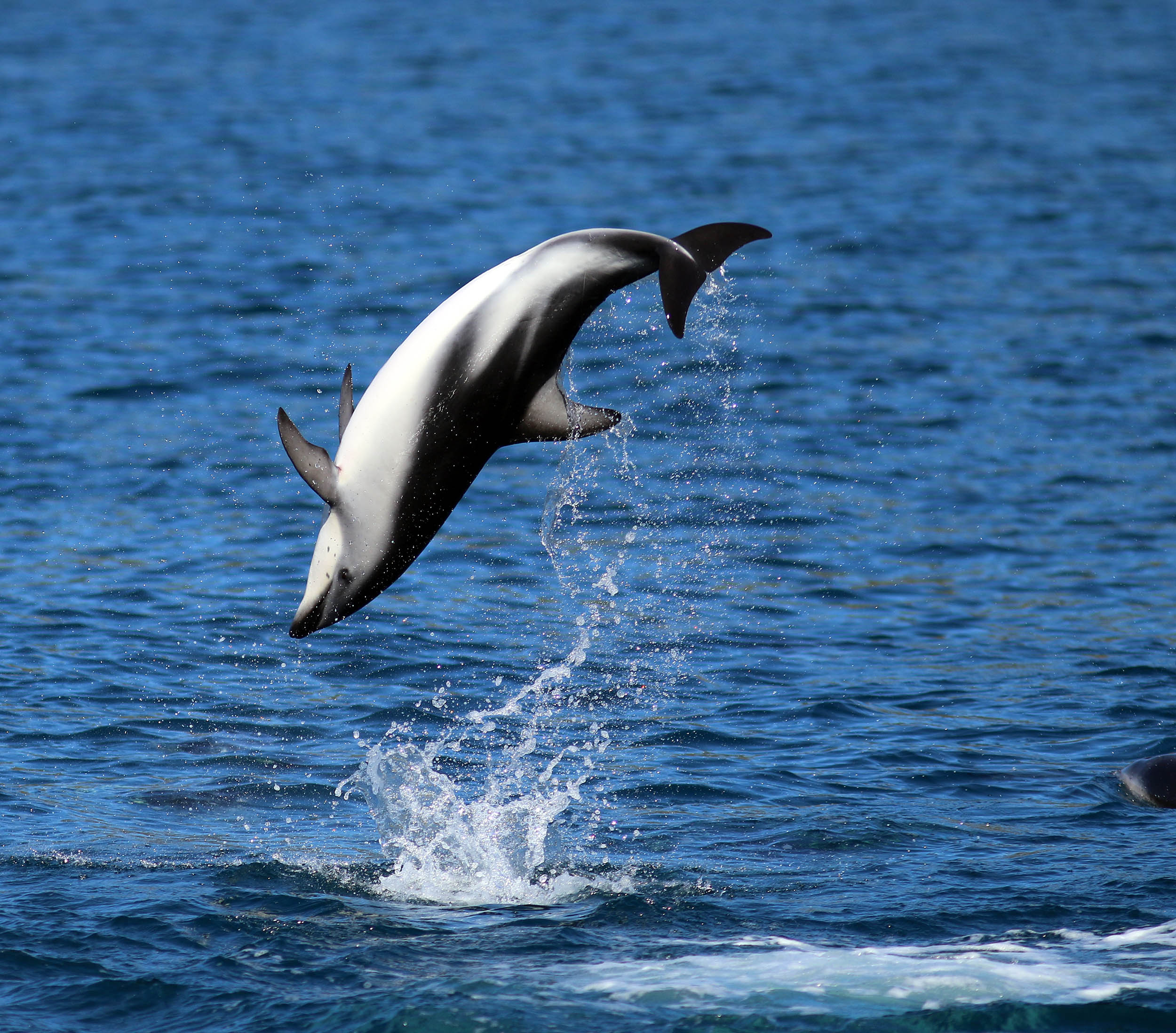
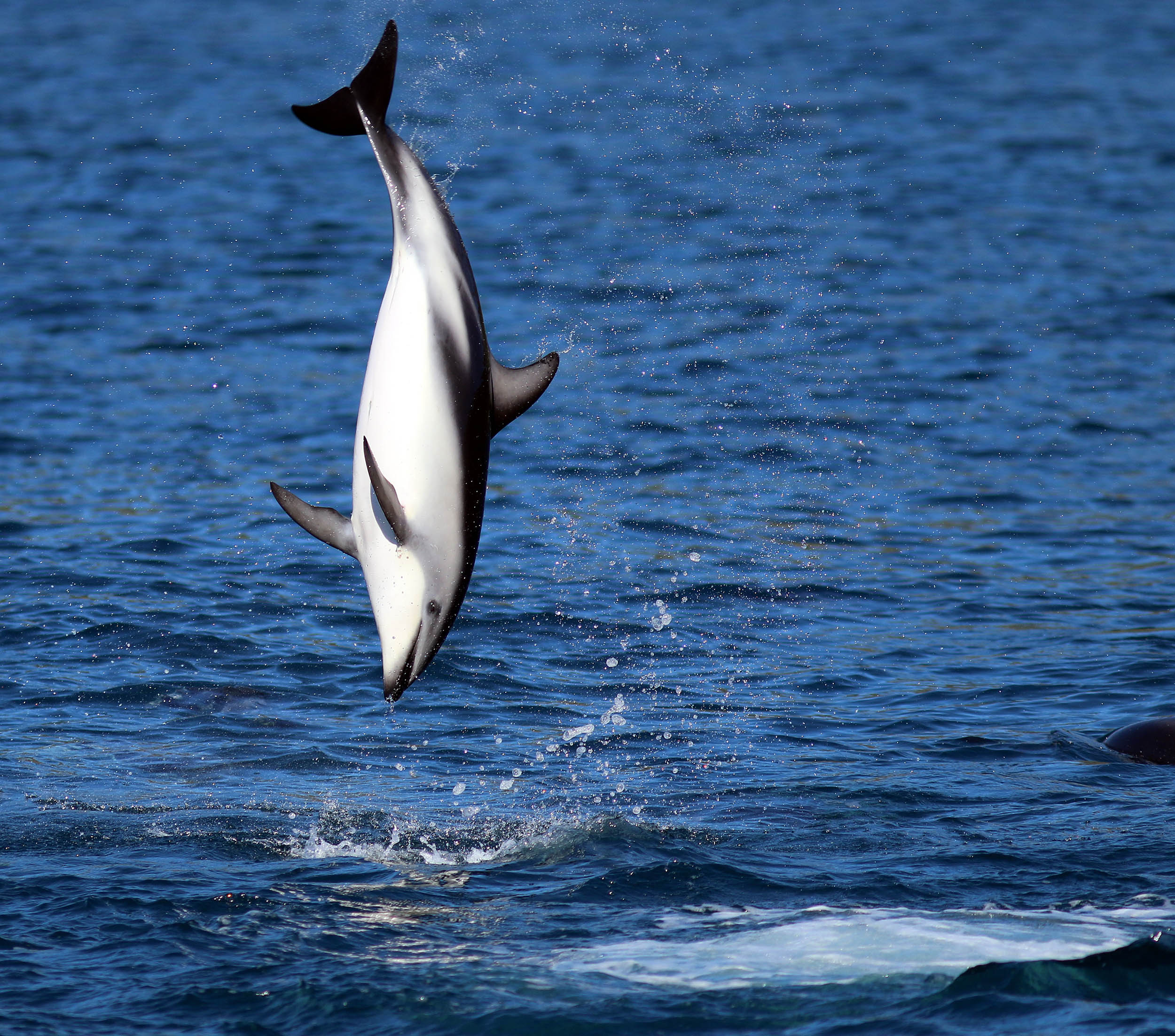
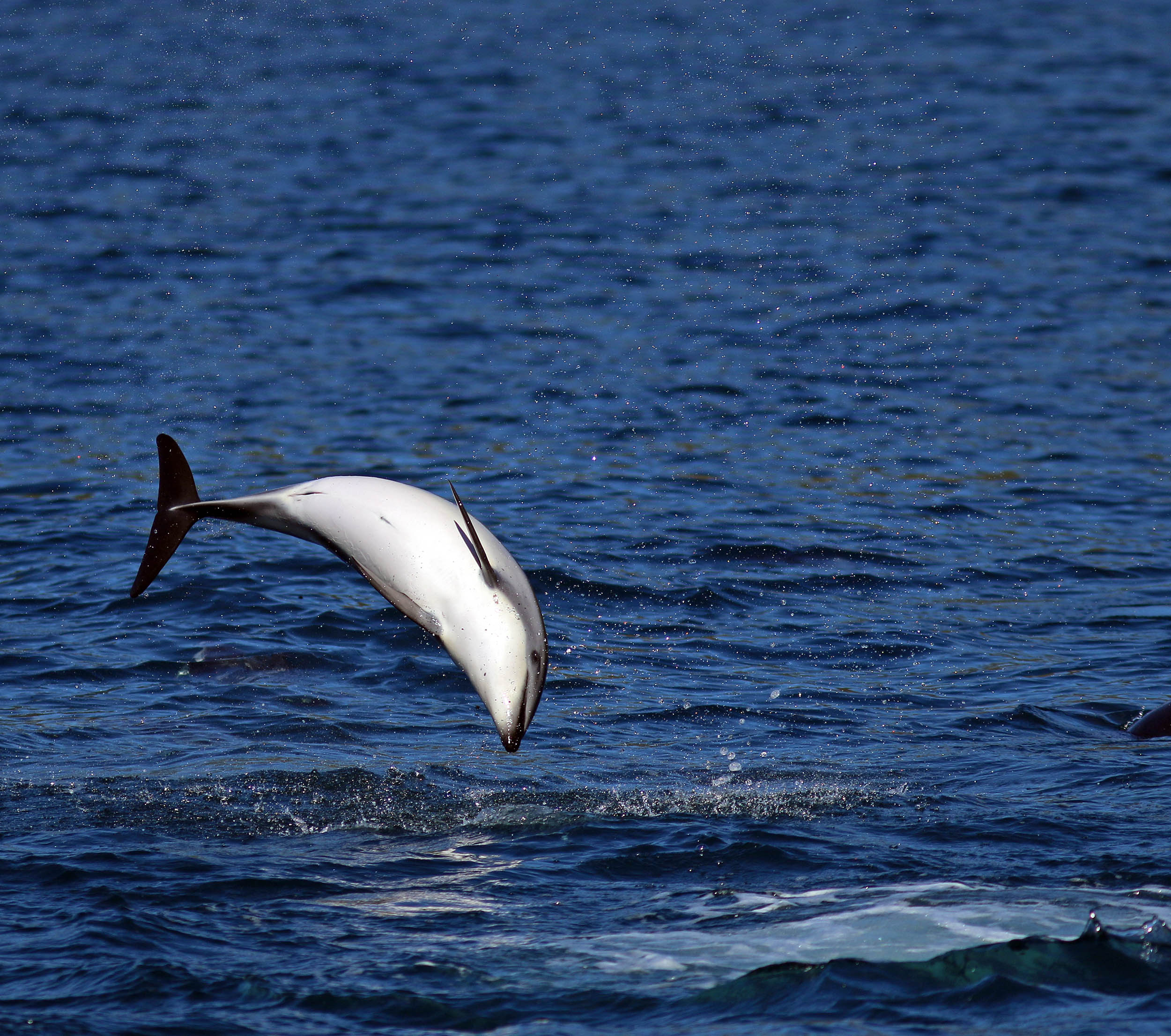
The largest predator in the world is the Physeter macrocephalus, 'Sperm Whale'. It can turn up anywhere where there is deep water across the globe; one of the best places to see them is along the east coast of the South island of New Zealand.
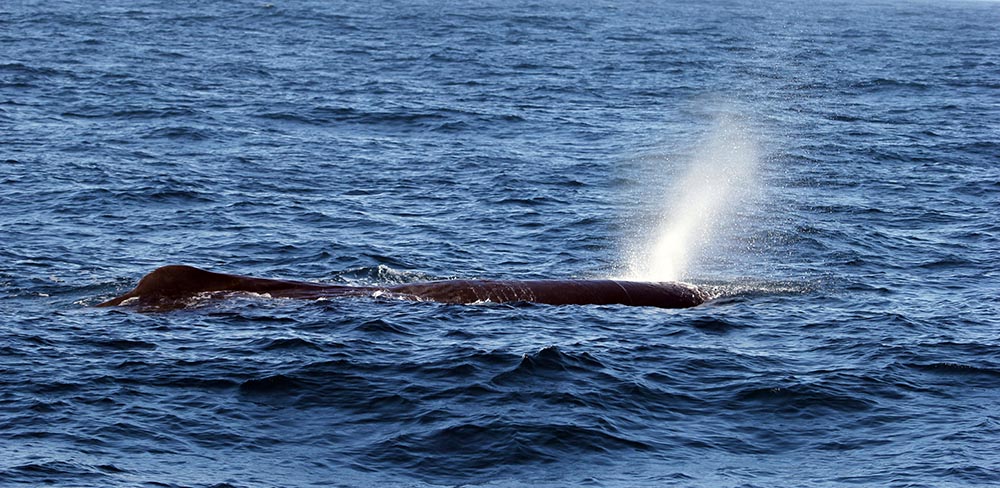 (Kaikoura, New Zealand)
(Kaikoura, New Zealand)The family Otariidae comprises the 'Eared Seals', including the sea lions and fur seals. New Zealand Fur Seals often expose their flippers to the sun to warm up. Arctocephalus forsteri, 'New Zealand Fur Sea'. Found around coast of New Zealand and southern Australia.
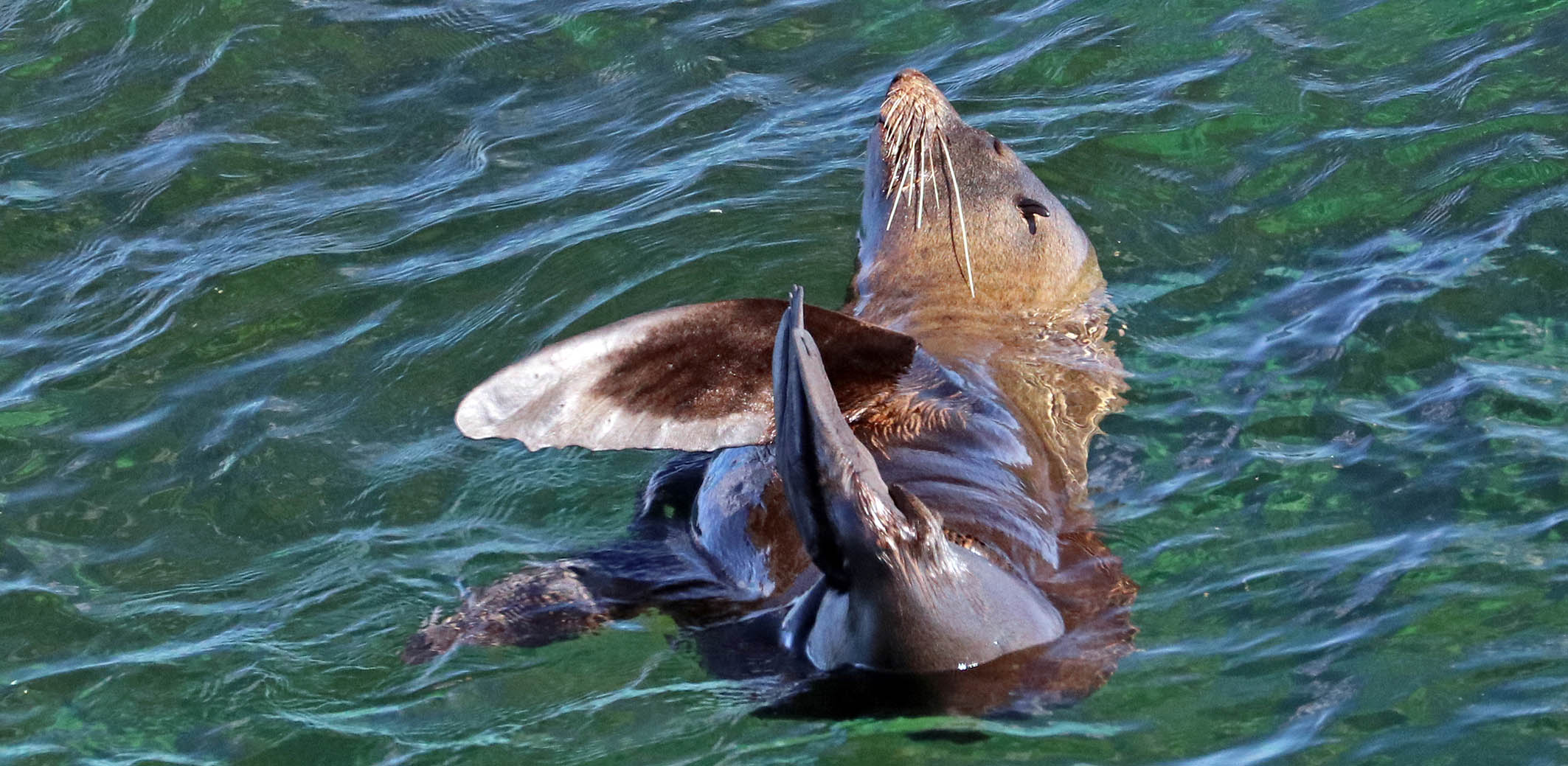 (Rottnest Island)
(Rottnest Island)Places to experience Australasian temperate oceans
New Zealand has great coastline and rich temperate waters to explore. The seas off Kaikoura are incredibly rich with life, due to a drop off close to the coast. There is an interesting window into the underwater world through the Milford Sound Underwater Observatory. The rarely visited Snares Islands are south of Stewart island off the South Island, New Zealand. In Australia, Rottnest Island in the south-west has nice nature both above and below the water, the oceans around Kangaroo Island and Tasmania are great for observing sea life from a boat or a beach, and the some of the best and most accessible snorkelling in temperate waters is at the Sydney beach suburb of Clovelly.

